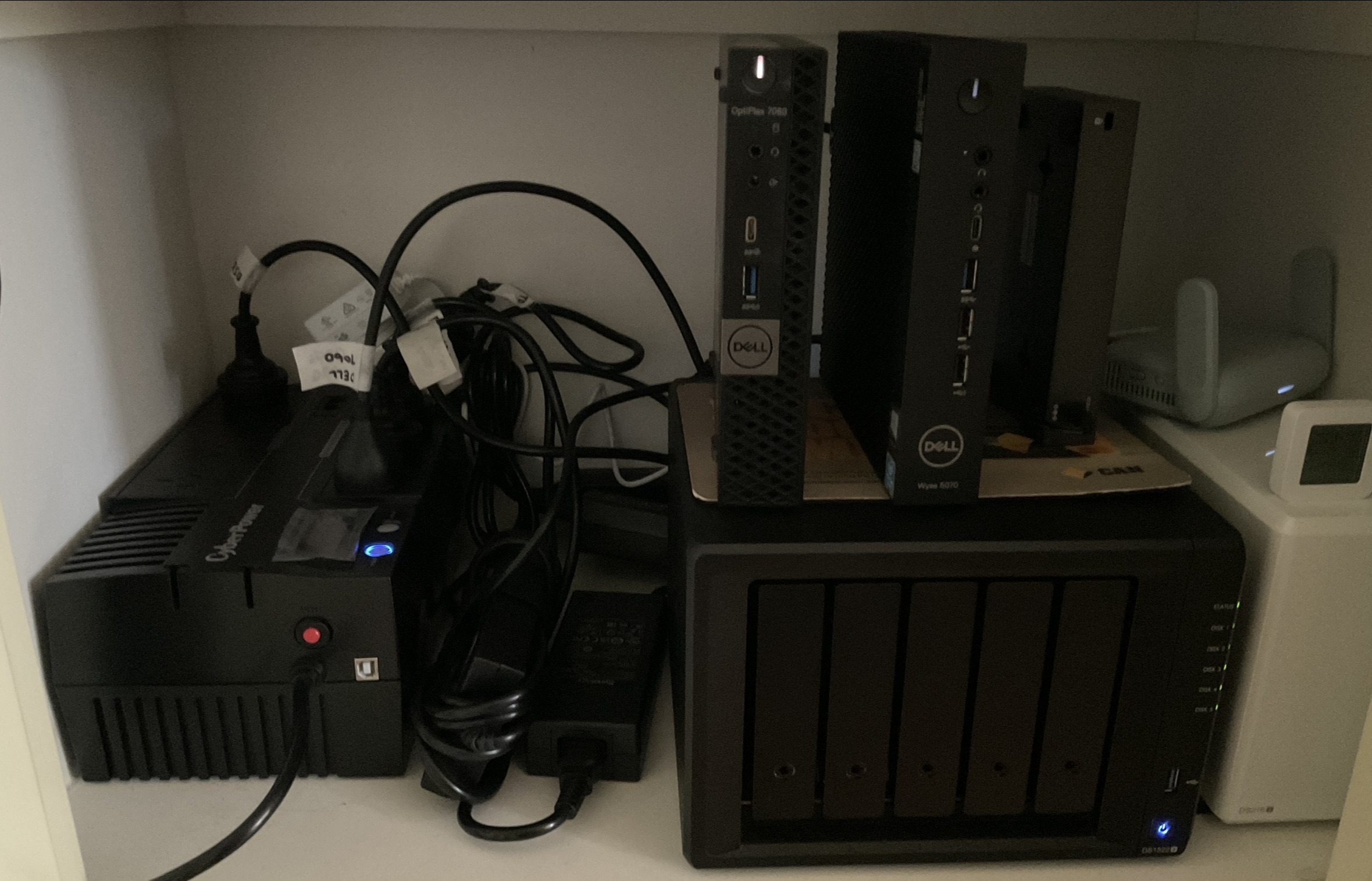

Tailscale is available as an official DSM package, so if it’s only you accessing it you could still block it from the Internet.


Tailscale is available as an official DSM package, so if it’s only you accessing it you could still block it from the Internet.


Jellyfin is also available as a native DSM package through SynoCommunity, FWIW.
I’m interested in how you like Ceph.
My setup is similar, using a DS1522+ volume as shared block storage for an iSCSI SAN for three Proxmox nodes. Two nodes are micro PCs and the third is running on the 1522+. There’s a DS216j for backups.
Also make sure the Synology has enough RAM for what you want to do.


Seconded. Software RAID is much easier to recover from.
I run both for a similar reason. It’s the same library, point both services at it and you have more choice of apps. Yet another benefit to self hosting.
It’s for the best
Agreed. I would also reconsider ditching the ISP router. You can still connect your gateway to it, and having the ISP device on premises can mean they might not blame your equipment for a line issue.


Also needs mentioning: clustering. I have a years old cluster with none of the hardware I originally started with, but my Pi-hole is still there. Having the ability to migrate guests between hosts is a game changer when you frequently replace or rebuild said hosts. With the right setup, migration can have as little as a few seconds of downtime, or even no downtime at all. You can’t do that with bare metal installs.


Can a container output video to a display? I have a container I remote into with GNOME on it, but would like to log into a console if possible.


Indeed, it’s worth explicitly checking every drive you buy if you are using it in a NAS.


SMR is a relatively new disk format technology that makes drives cheaper but writes slower, which can be noticeably bad in a NAS, especially if you are using a write-intensive RAID type. Most disk manufacturers will have drives meant for NAS like WD Red or Seagate Ironwolf, and they are almost all CMR and not SMR.
I understand the attraction of virtualising this, but unless you want to share more than just the ISP connection, I would be providing Internet access to your neighbour’s untrusted network using a bare-metal router. Just my two cents.


Subscription streaming where you don’t “own” anything probably has a future, but I think you’re right that the writing is on the wall for digital media purchases.


Piracy is only illegal because we made it so. We can change that.




Also, you can’t just dump a bunch of money and get instant quality and speed.


I’m interested to see what others are doing here. All I do is update tags with MusicBrains before dropping them on my NAS for Plex & Jellyfin.


I think Tal’s response is fine. People (including me) often ask about help with a solution they’ve already decided on, without explaining why they eliminated other alternatives that would solve their problem. Sometimes it’s good to back it up. Further, there are more than just OP reading the responses so it might apply to others now and in the future.
Cupboard + DiskStation + OptiPlex = Win